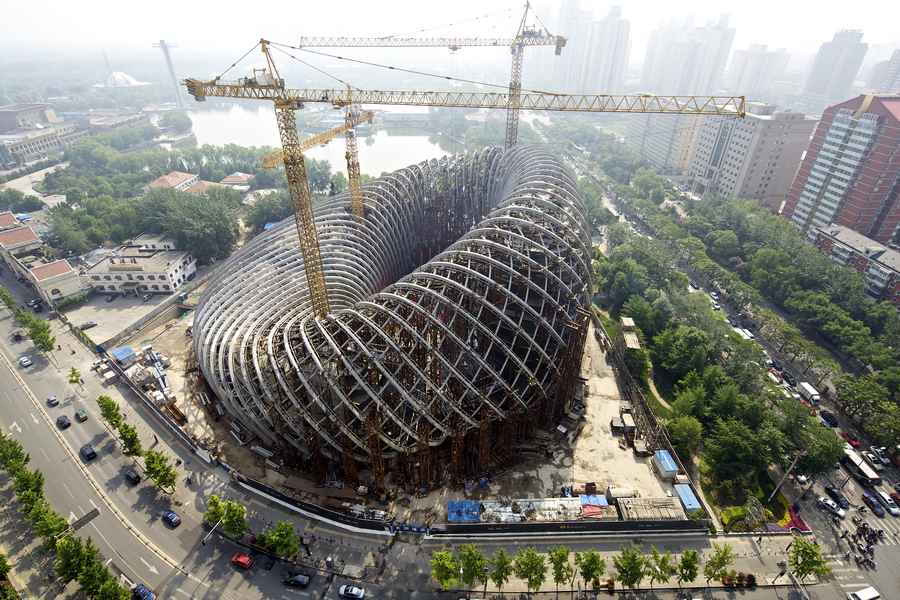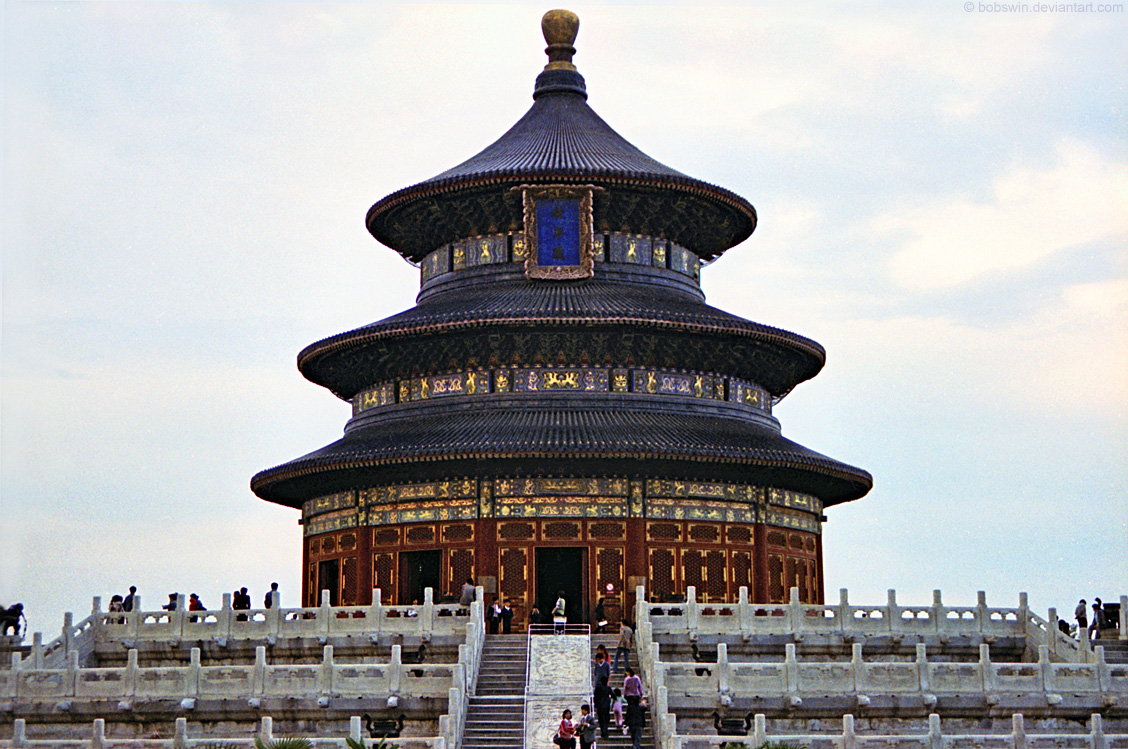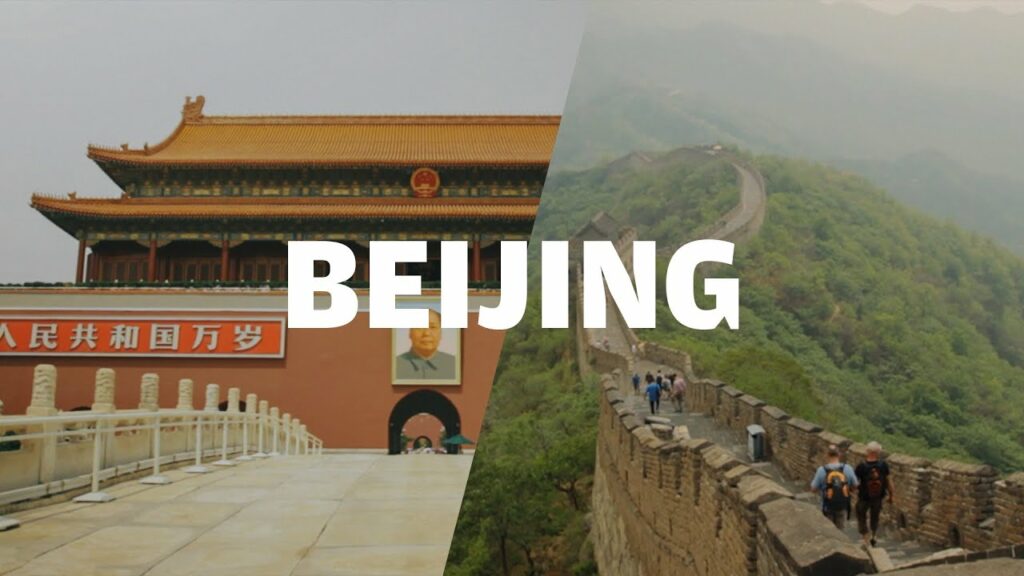China’s capital city, Beijing is one of the most charming cities in the world with genius architecture oozing of elegance and sleek designs. It is home to world-class Chinese hotels in Beijing with the most exceptional dining experience. Beijing is one of the most spectacular destinations to visit in 2019.
We feature Beijing’s excellent mix of modern contemporary architecture and ancient buildings steeped in culture and tradition.
Modern Beijing Architecture

CCTV Headquarters
The CCTV headquarters building is the epitome of modern Beijing architecture. This twisty, robotic remarkable structure is pure genius. It looks like two inverted L’s connected.
Creation of the Pritzker Prize-winning Dutch architect Rem Koolhaas is one of the most significant office buildings across the world. The 49 story badass is rock solid, able to withstand high winds and earthquakes.
The bold construction features jagged cross sections built of 80,000 tonnes of steel. The headquarters is home to China’s broadcaster, China Central Television. Covering an area of more than 470,000 sq meters, the CCTV establishment is fully equipped with production facilities, studios, theatres, and offices.
National Center for Performing Arts
Dubbed Beijing’s egg, the National Center for Performing Arts is a masterpiece. This oval dome-shaped titanium and glass architecture is out of this world. The spectacular design is 144 meters wide, 212 meters long and 46 meters high.
There is a hallway beneath the lake that leads you inside the building. This grandeur design features a titanium shell that springs up like an island at the center of the human-made lake. It’s arguably China’s most bold design that was built in 2008 to entertain patrons in the Beijing Olympics.
The elliptical dome houses 4 performance zones: the concert hall on the eastern wing of the building with 2017 seats, the opera house at the central part of the building with 2398 seats, a small multifunctional theatre with 556 seats for chamber music and solo performances and a drama theatre on the western wing of the building with 1035 seats.
Capital Museum
The capital museum is the second largest museum in Beijing China and is located in central Xicheng District. Covering 64,000 square meters, the museum consists of the multifunctional hall, the central ritual hall, cultural heritage storehouse, exhibition hall, and digital movie hall.
This creation of French-born Jean-Marie Duthilleul and AREP is home to more than 5622 cultural relics on public display and exhibits china’s most iconic ancient treasures.
Beijing International Airport Terminal
The terminal building T3 (Terminal 3) at Beijing International Airport was designed by architect Norman Foster completed in 2008 ahead of the Beijing Olympic summer games.
This building is the world’s most environmentally friendly airport with natural light and economy of space.
It consists of two satellite concourses (Terminal 3D and Terminal 3E) and three main passenger terminals (Terminal 3A, B and C).
National Aquatic Center
Dubbed the water cube due to its watery color and cubic form the National aquatic center is an important stopover when you visit Beijing. The structure is the single most comprehensive and complicated EFTE structure worldwide with over 100,000 sq meters of EFTE foils.
The venue was famous for diving, swimming, synchronized swimming, and water polo sports during the 2008 Olympic summer games. The water cube grabbed the world’s attention when it made headlines during the 2008 Beijing Olympics with its color changing walls.
During the day when the sun rays strike the building, the water cube glitters in a translucent blue spectacle while at night it radiates a stunning visual effect thanks to the glow of its LED bubbles.
Bird’s Nest Stadium
The national stadium dubbed the Bird’s nest is an innovative grid formation with a bowl-shaped roof and twig-like structural elements creating a masterpiece of a gem.
This genius piece of art is built across 36 km of unwrapped steel of about 45,000 tonnes perched on 258,000 sq meters with at least 100,000 seats.
The grand dame of Beijing is a bit of heaven on earth. It is one of the coolest stadiums in the world and a hallmark for where Usain Bolt smashed his 200m world record in the 2008 Beijing Olympics. The stadium is not only a sports hub but also a shopping complex.
Ancient Beijing Architecture

The Forbidden City
The Forbidden City, Beijing’s premier must-visit landmark is one of the most sought after destinations in the world. Splashed in red and yellow glazed roof tiles, the Forbidden City, at the heart of Beijing is the world’s largest palace complex with 800 buildings and 9000 rooms sitting on 720,000 sq meters.
It is one of the most attractive getaways in the world drawing in millions of travelers every day. Admire its splendid architecture and explore China’s architectural development. This 600-year-old building used to be the imperial palace of the Ming and Qing dynasties and birthplace for Feng Shui principles.
A cultural heritage reserve for China, the modern museum features exhibition galleries for imperial attractions and beautiful artwork.
Beijing Ancient Architecture Museum
The ancient architecture museum is a must-see attraction in Beijing’s Xiannong Altar. It is home to China’s ancient artifacts. On display are contemporary exhibitions in Xipel hall, Taisu hall and Bai Hall.
The museum features collections that are “models of Beijing old city” including architectural relics and patterns. There are several exhibitions including the exhibitions of ancient Chinese architecture and picture exhibitions of the temple of agriculture.
The main attractions include the temple of agriculture (with displays of Ming and Qing Dynasties), Guangeng platform, Jufu hall, Qingcheng palace, Shencang, and the emperor’s farmland.
Beijing’s Hutongs
Hutong means “water well” according to the Mongolian language and its a significant component of ancient Chinese architecture. Its unique layout and structure make it one of the must-see wonders of the world.
As the Chinese say, where there’s a hutong, there’s a story.
Beixinqiao Hutong in Beijing has the most turns. With more than 20 twists it is easy to get lost. The Beijing hutong is an ancient alley among courtyards builds during the Yuan, Ming, and Qing dynasties 7000 years ago.
Hutong represents the rich and diverse culture of Beijing especially grassroots Beijingers. The houses are interconnected together like a cheeseboard making it easy for neighbors to mingle with one another.






